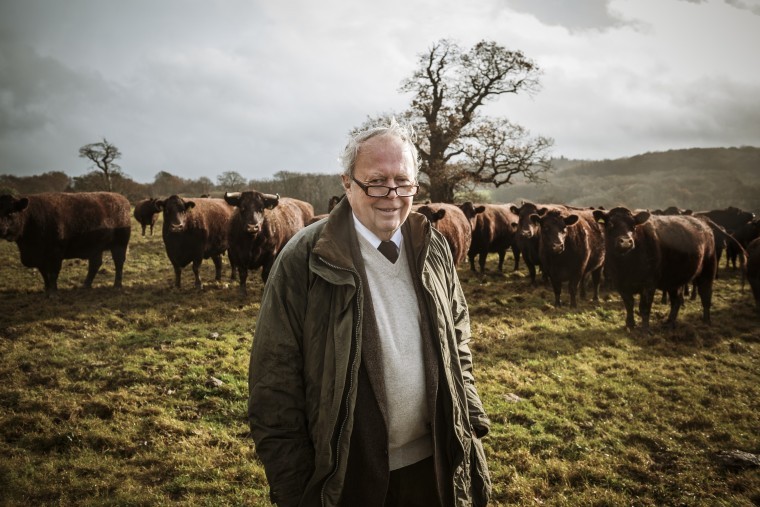A batch of one of the Britain’s oldest cattle breeds will soon be grazing on Spanish land, following a groundbreaking tie-up between an English Peer and a Spanish farmer.
Ten Sussex cattle from Lord De La Warr’s Buckhurst Estate in East Sussex are heading to Julio Grande’s 5,000 hectare farm in Salamanca.
Nine heifers and one bull (plus one Longhorn heifer) will be shipped from Withyham to western Spain, marking what’s thought to be the first foray of this beautiful breed on to Spanish ground.
The Buckhurst Estate, the location of the ‘100 acre wood’ immortalised in AA Milne’s Winnie the Pooh, has about 50 ‘purebred’ Sussex breeding cows. Unlike on many other farms, these animals are not crossed with other breeds, making it the largest such ‘traditional’ herd in the country.
Meat from Lord De La Warr’s well-known organic herd, famous for its marbling and flavour, is destined for plates in top-quality restaurants.
“We’ve worked hard to nurture a pure Sussex line and are proud to have animals with a reputation for producing a flavoursome and quality carcass,” he says.
“We keep them on an entirely grass-fed system. They’re hardy beasts and are phenomenal at converting grass into meat.”
Lord De La Warr has kept the breed, with its distinctive rich red-brown coat, for about 15 years at the beautiful Buckhurst Estate. “I can’t imagine this estate without Sussex cattle. They’re very special to me.
“It’s important that we foster interest in these wonderful animals as the number of pure-bred Sussex breeding cattle is now so low it’s almost at a level that the Rare Breeds Survival Trust considers ‘critical’ in relation to some breeds.
“The animals are easy-to-manage and, because they thrive in low-input situations, they dovetail perfectly with the many environmental stewardship schemes in which we’re involved.
“It’s hardly surprising they’ve proved popular in countries as far afield as New Zealand, North America and South Africa – but it’s fantastic to now see them head to Spain. It’s the first time we’ve sold any cattle abroad.”
The animals are set to be transported from their home between Tunbridge Wells and East Grinstead to the Carrascal de Sanchiricones farm, which is about 800m above sea level and sees sub-zero winter temperatures rise as high as 35°C in summer.
Farmer and lawyer Julio Grande says: “The first Sussex cattle I ever saw were ones on the Royal Estate at Windsor – and I immediately fell in love with the breed. I was determined then to start a herd.”
Julio plans to establish a pure breed herd, plus cross some of the animals with other breeds to explore opportunities for ‘hybrid vigour’.
“I am a big admirer of UK farming methods so I’m constantly looking to learn from places such as Buckhurst. I’m very excited about this new project – and a little nervous!”
According to the land agent at Buckhurst, Mark Weaver of CLM, the estate has a proud heritage of innovation.
“The Sussex cattle enterprise represents a coming together of the traditional and the modern,” he says. “It’s utilising a breed with roots dating back many centuries into a progressive 21 century farming system.
“In the post-Brexit era, as subsidies for direct agricultural production fall and disappear, so farmers and landowners will have to come up with new, market-focused ways to generate revenue,” adds Mark.
“A few years ago, there was a lot of focus on ‘Continental’ breeds such as Charolais, but now the day of the ‘native’ breeds could again be coming and breeds such as the Sussex could be set for a renaissance.”




